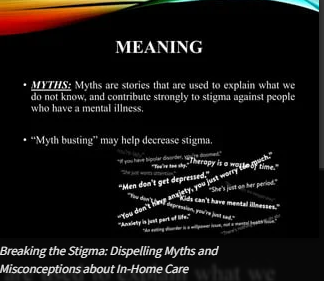Chronic back pain transcends mere physical discomfort, significantly impacting the emotional and psychological well-being of those it afflicts. This type of pain is relentless, often becoming a constant presence in one’s life that affects every action and decision. For patients and healthcare providers alike, understanding the multifaceted nature of chronic back pain is crucial. A comprehensive approach to treatment can lead to more effective management of the condition and significantly enhance the quality of life for sufferers.
The complexity of chronic back pain is evident in the way it interacts with both the body and mind. Patients frequently report a range of psychological effects, including depression and anxiety, which in turn can exacerbate the physical pain, creating a debilitating cycle of suffering. Addressing both the physical symptoms and emotional distress is essential for breaking this cycle. This holistic view fosters more tailored and effective treatment strategies, incorporating everything from advanced medical interventions to in-home care and mental health therapy.
The Multidimensional Impact of Chronic Back Pain
Chronic back pain is not just an ailment of the body but also affects the mind and emotions deeply. Patients dealing with prolonged back pain often experience a range of psychological issues, with depression being a prominent concern. The relentless nature of chronic pain can lead to significant mental health challenges, exacerbating the physical pain and creating a cycle that can be hard to break. This intersection of physical and mental health issues underscores the importance of a holistic treatment approach that includes mental health therapy, trauma therapy, and depression therapy.
Understanding Chronic vs. Acute Pain
It’s essential to distinguish between acute and chronic pain. Acute pain acts as a biological alarm system, alerting the body to potential injury, such as stepping on a nail. This type of pain generally subsides once the underlying issue is addressed. However, chronic pain, particularly in the form of chronic back pain, does not serve a protective or preventive role. It often persists without a clear cause and continues to send pain signals to the brain, regardless of the absence of an ongoing injury or apparent damage. This makes treatment more challenging and necessitates a tailored and often multi-disciplinary approach.
The Personal Nature of Pain
Chronic pain is highly personal and subjective. Two individuals with the same diagnosis may report vastly different pain experiences and symptoms. This variability can complicate diagnosis and treatment, making personalized care plans essential. In cases where chronic back pain persists without detectable physical signs, it is treated as a primary condition, focusing on managing the pain itself rather than curing an underlying cause.
Comprehensive Pain Management Strategies
Effective management of chronic back pain typically involves a combination of therapeutic strategies. While some patients may benefit from surgical interventions, others might find relief through non-surgical methods. Pain management plans might include:
- Identification of Pain Sources: Determining the root causes or contributing factors of back pain.
- Non-Surgical Treatments: Employing physical therapy, medication, or alternative therapies to alleviate pain.
- Surgical Considerations: Evaluating whether surgery is necessary based on the effectiveness of non-surgical treatments.
- Post-Surgical Rehabilitation: Assisting patients in recovering from surgery and addressing any residual pain.
- Ongoing Coping Strategies: Helping patients manage long-term pain and improve their quality of life.
The Role of In-Home Care in Managing Chronic Back Pain
For many patients, especially the elderly or those with severe mobility restrictions, in-home care is invaluable. In-home caregivers can provide assistance with daily activities, ensuring that patients adhere to treatment regimens prescribed by their healthcare providers. They can also play a critical role in administering medications, facilitating physical therapy exercises, and providing transportation to medical appointments.
Integrating Mental Health Therapy
Addressing the psychological aspects of chronic pain is as crucial as managing physical symptoms. Mental health therapy, including modalities like cognitive-behavioral therapy (CBT), can help patients develop healthier ways to cope with pain. Specific therapies, such as trauma therapy and depression therapy, can also be integrated into the patient’s care regimen, particularly if their pain is compounded by psychological factors.
Incorporating adult therapy into the overall treatment plan helps in addressing the profound emotional toll that chronic back pain can take. Therapists can work with patients to improve emotional resilience and equip them with tools to manage the stress and depression that often accompany chronic pain.
Comprehensive Care for Chronic Back Pain: A Path Forward
Successfully managing chronic back pain requires a multifaceted approach that acknowledges both its physical and psychological impacts. The integration of specialized therapies, whether they be surgical, pharmaceutical, or non-invasive alternatives, forms the cornerstone of an effective treatment plan. However, the inclusion of mental health support through therapy sessions tailored to address trauma, depression, and chronic pain management is equally vital. These therapeutic interventions help patients not only cope with the pain but also improve their overall emotional resilience, which is crucial for long-term management of chronic conditions.
In addition to medical and psychological treatment, the role of in-home care cannot be overstated, especially for those whose mobility is severely affected by back pain. In-home caregivers provide essential support that extends beyond basic medical care, assisting with daily activities, ensuring compliance with treatment regimens, and offering companionship, which can significantly reduce feelings of isolation and helplessness often associated with chronic illness. Together, these comprehensive care components ensure that patients have the resources and support needed to navigate the challenges of chronic back pain, leading to improved outcomes and a better quality of life.




